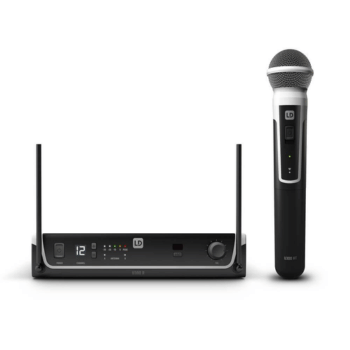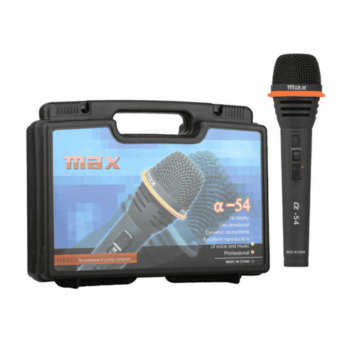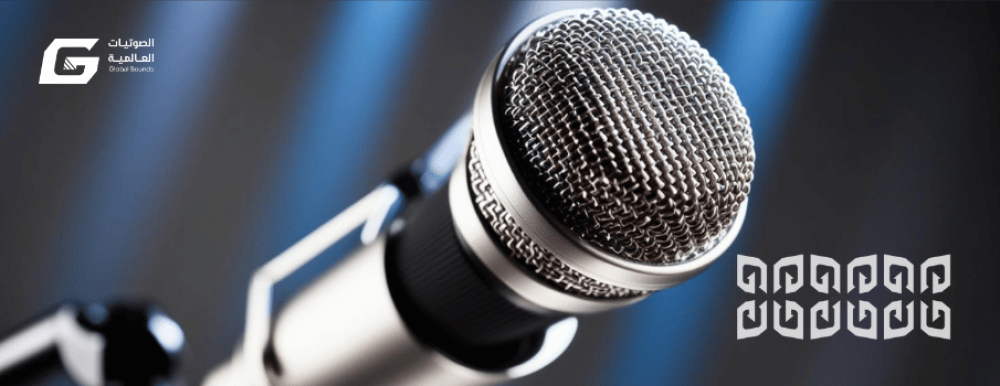the introduction
The dynamic microphone is one of the most common types used in many audio applications, whether for live performances, voice recordings, or even everyday uses such as voice calls. This type of microphone has a strong reputation for its durability and ability to withstand heavy use and deliver clear, powerful sound. In this article, we'll explore the advantages of a dynamic microphone, its various uses, and how to choose one based on your specific needs.
The importance of the dynamic microphone
1. Withstands heavy use
Dynamic microphones are known for their ability to withstand heavy use, making them ideal for stage performances, live performances, and concerts. They are exceptionally durable, allowing them to be used for hours without compromising their quality.
2. Excellent performance in noisy environments
A dynamic microphone is capable of capturing sound clearly even in environments with high background noise, making it an ideal choice for live performances or in work environments where sound isolation is required.
3. Best choice for live audio recording
When used in live recordings or broadcasts, a dynamic microphone produces powerful, clear sound without being affected by vibrations or unwanted noise.
4. Reasonable cost
Dynamic microphones are typically more affordable than condenser microphones, making them an ideal choice for people looking for excellent audio performance without a large budget.
BEYERDYNAMIC TG-V50D Cardioid Dynamic Microphone

Dynamic microphone characteristics
1. Polar Pattern
Dynamic microphones typically feature a cardioid pattern, which captures sound from the front only. This pattern helps reduce background noise from the sides or back, resulting in clearer, less distorted audio.
2. Endurance and toughness
Dynamic microphones have an internal structure that makes them less susceptible to damage than other types, such as condenser microphones. They can withstand shock and vibration caused by movement, making them an ideal choice for live performances.
3. Simple structure
The internal structure of a dynamic microphone is simple and effective. It consists of small coils and magnetic cylinders that convert sound into an electrical signal, allowing it to operate efficiently and at a lower cost compared to more complex types.
4. High sound resistance
Dynamic microphones are excellent at handling high volume levels, making them ideal for performing on stage or during musical performances where the voices are loud.
Uses of the dynamic microphone
1. Live shows and concerts
Dynamic microphones are the premier choice for live performances and concerts. These microphones deliver powerful, clear sound without being affected by ambient noise, allowing the singer or performer to effectively interact with the audience.
2. Live audio recordings
In studios, a dynamic microphone is used for recording live audio, such as podcasts or live radio. It is characterized by its ability to accurately capture sound while minimizing ambient noise.
3. Voice calls and meetings
Dynamic microphones are a good choice for use in voice calls or online meetings, as they ensure clear audio and reduce the influence of external noise.
4. Religious applications
In mosques or churches, a dynamic microphone is used to transmit sound clearly during sermons or prayers. Thanks to its rugged design, it is reliable in these high-traffic settings.
5. Live broadcasting and video recording
Dynamic microphones are also ideal for live streaming on platforms like YouTube or podcasting, providing powerful, distortion-free sound in a variety of environments.
Wireless Microphone System with Handheld Dynamic Microphone - 655 - 679

Tips for Choosing a Dynamic Microphone
- Specify use
- First, determine what type of use you need the microphone for. Is it for live performances or for recording audio in the studio?
- Research on microphone durability
- Since dynamic microphones are used in a variety of environments, look for a microphone that is durable enough to withstand shock and vibration.
- Sensitivity level
- Make sure the microphone is suitable for the sensitivity level you require. Dynamic microphones may be less sensitive than condenser microphones, making them ideal for use in noisy environments.
- Ensure compatibility
- Check that the microphone is compatible with your other audio equipment, such as speakers or recording systems.
Best Dynamic Microphones
- Shure SM58
- It's one of the best dynamic microphones for live performances. It has a strong reputation for excellent performance and clear sound that withstands heavy use.
- Sennheiser e835
- A dynamic microphone known for its clear sound and powerful performance in live sound environments. Suitable for live performances as well as vocal recordings.
- Audio-Technica AT2005USB
- This microphone delivers powerful performance with USB connectivity, making it ideal for podcasting and voice recording.
- AKG D5
- This dynamic microphone features amazing sound quality and the ability to handle loud volume in live performances.
MAX A_54 Dynamic Sensitive Microphone

conclusion
A dynamic microphone is the ideal choice for anyone looking for a durable and reliable microphone, whether for live performances, vocal recordings, or even everyday uses like voice calls. Thanks to its durability, ability to withstand high volume levels, and clear audio delivery in noisy environments, the dynamic microphone is an indispensable tool in many audio applications.
Visit our online store to discover a range of premium dynamic microphones that guarantee clear, powerful sound at all times.
Suggested topics for other articles:
- Best microphones for podcasting: comparing dynamic and condenser options.
- Microphones for Live Performances: How to Choose the Best One?
- How to improve sound quality using dynamic microphones.
- The best accessories you need with dynamic microphones.
- Dynamic vs. Condenser Microphones: Which One Is Right for You?

